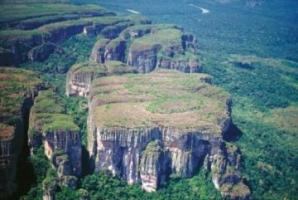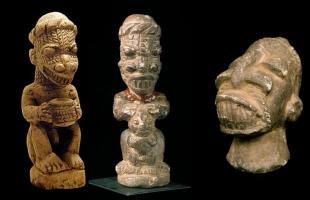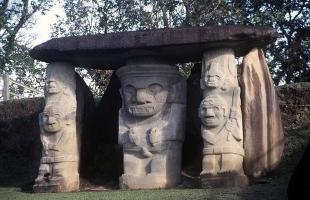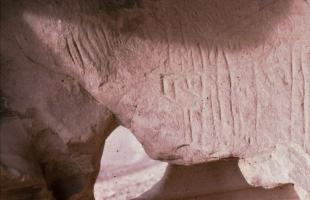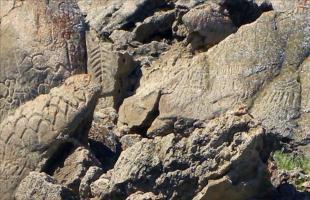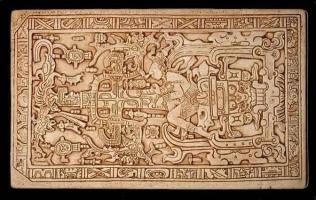Old Copper Culture in America

Greetings,
Here's my promised analysis of the Old Copper Culture in America, and its seeming links with the Mediterranean. I've again summarised Madison, and then included some additional new info.
______________
"Mop-up operations are what engage most scientists throughout their careers. Mopping-up is what normal science is all about. This paradigm-based research is "an attempt to force nature into the pre-formed and relatively inflexible box that the paradigm supplies". No effort is made to call forth new sorts of phenomena, no effort to discover anomalies. When anomalies pop up, they are usually discarded or ignored. Anomalies are usually not even noticed and no effort is made to invent a new theory (and theres no tolerance for those who try)." (Based on _The Structure of Scientific Revolutions_, by Thomas S. Kuhn.)
So here are some more "archaeological anomalies" for scholars to ponder on. The following is from Madison (I include my comments in square brackets). I only include here some excerpts that contain clear archaeological evidence for trans-Atlantic cultural similarities starting ca 4500 BC and up to 700 BC. By the looks of it, as these "anomalies" keep accumulating, they are just about ready to overturn the old paradigm of American Isolationism. However well it is entrenched in the groves of the academe, it's about time for it to follow the old Clovis Barrier Myth along with the Flat Earth Theory on their way to the dump.
[quote]
http://www.execpc.com/~talossa/berb4.html
According to historian Alice Kehoe of Marquette University, travellers using the Irminger Current past Iceland and Greenland helped carry trade and cultures both ways across the North Atlantic (Kehoe [in Carroll L. Riley, et al., eds., Man Across the Sea: Problems of Pre-Columbian Contacts (Austin: University of Texas Press, 1971)], 285ff). The impact from this trade was quickly felt all over the St. Lawrence River valley and down the American East Coast (Map 3): around 4500 BC a new culture known as the "Late Archaic" emerged "suddenly," with no discernable predecessor. All its traits, including gorges, adzes, plummets, ground slate points and knives, barbed bone harpoons and peculiar chipped stone projectile points, occur in northwestern Europe at an earlier date (Kehoe, 286).
[Important evidence here.]
Distinctive "dolmens" (multi-ton boulders balanced precisely on three smaller stones) were constructed on both sides of the Atlantic. Received opinion holds this to be pure coincidence, but it is hardly plausible that these enormous and distinctive structures should "just happen" to be invented on two different continents at exactly the same time, especially in the one part of America most accessible to the Megalith builders of Europe (Trento, ch. 2). After 3500 BC, at the height of Megalithic influence from Europe, the first small burial mounds begin to appear on the American East Coast in imitation of the Berber practice (Fagan, 361).
[Hardly can be considered a coincidence. Then "Old Copper Culture" appears in N America, around Lake Superior, not long after 3000 BC.]
The chief artifact of the Old Copper Culture is, of course, copper; a vast range of copper tools appears suddenly in the archaeological record with no antecedent. Mason remarks: "Incredible numbers of copper artifacts, tens of thousands in eastern Wisconsin alone, attest to a use of the metal that is at variance with historical and ethnographic descriptions of Indian life" (Mason, 185). The mines these Berbers established yielded mind-boggling amounts of copper an estimated 500,000 tons! Only a tiny fraction of this can be accounted for in New World archaeological sites, so where did the rest of it all go? The best explanation is that it went to the growing civilizations of the Mediterranean, to fuel the growing "chalcolithic" economies of the Old World (Bailey, 29f; Fingerhut, 49). The Berbers who settled the New World have left records of their first appearance; sculptured stones north of Lake Superior closely resemble those found in the Berber-speaking Canary Islands (Bailey, 101). Indeed the resemblance is so obvious that some scholars once suggested that the Canary Islanders originated in America (Sergi, 129).
Old Copper Culture (including "Red Ochre" phase)
Arose ca. 3000 BC (WA 67:217)
Flexed burials (WA 67:225)
Burial in mounds (WA 67:229)
Cremation (WA 67:225)
Burial with stone arrowheads (WA 67:221)
Burial with copper daggers (WA 67:220)
Burial without pottery (WA 67:234)
Bow-shaped pendants (WA 67:219f)
Hunter-gatherers (WA 67:227)
Red ochre in burial (WA 67:229)
Wrist-guards (WA 67:222)
Copper mining using fire and water (WA 67:220)
"Annealed" (tempered) copper (WA 67:220)
Beaker Group Culture (especially in North Africa)
Arose ca. 3000 BC (Trump, 148f)
Flexed burials (Schutz, 120f)
Burial in mounds (Cunliffe, 251ff)
Cremation (Schutz, 120f)
Burial with stone arrowheads (Harrison, 92ff)
Burial with copper daggers (Harrison, 111)
Burial without pottery (Mokhtar, 435)
Bow-shaped pendants (Harrison, 51f)
Hunter-gatherers (Harrison, 23 and 100)
Red ochre in burial (Camps 1961, 521ff)
Wrist-guards (Harrison, 9)
Copper mining using fire and water (Schutz, 127f)
"Annealed" (tempered) copper (Schutz, 127f)
[After around 1500 BC the cultures of Western Europe were disrupted by Celtic invasions, and it is possible that some of these peoples migrated to America].
At this point in the archaeological record, Berber cultural traits appear suddenly and mysteriously all across the eastern United States and in the Caribbean. North African bent-stick and split-stick hafting techniques for grooved stone axes, for example, spread throughout the region. Agriculture, pottery, earthen mounds, and "new artifacts" arrived suddenly (Mason, 202). In Central America, pottery dating from this period is virtually identical to that being produced by North African Berbers (Kennedy 1971, 270f). All over the northeastern part of North America, the dominant "Vinette 2" style of pottery shows clear Iberian Beaker influence (Kehoe, 290f).
[Seems like solid evidence to me.]
At the same time, The Old Copper Berbers in southeastern Wisconsin, Michigan, Illinois and Indiana begin to employ the use of red ochre in their burial rites in large quantities. Archaeologists often refer to this stage of Berber development as a "Red Ochre Culture" (Mason 224). But it is important to note that the Old Copper and Red Ochre "cultures" were in truth a single entity (WA 67:229; Griffin, 239; Map 3). This use of red ochre in burial rites is, needless to say, a well-known feature of Berber culture (Camps 1974,
..
Berber inscriptions are found on the Cape Verde Islands, far out in the Atlantic (Mercer, 64), while Berber potters brought their techniques to Central America. Pottery from El Salvador, dated to around 1500 BC, is virtually identical to Berber pottery of the same period found in Morocco, near the Canary Islands (Kennedy 1971, 270f).
..after 1100 the Urnfield Celts invaded Spain and began eradicating the last Beaker civilization. Without a doubt, this disrupted what was left of the Beaker trade with the New World, and at roughly the same time, "for reasons not yet understood," the Isle Royale copper mines were abandoned and there occurred in the New World a notable decline in the use of copper to manufacture everyday tools (Bailey, 23; WA 67:227).
..
The chronological "coincidences" are too much for chance. In both Europe and the New World, at the very same time, Megalithic cultures arise around 4500 BC; then on both continents, at the very same time, copper-using Beaker-inspired cultures arise in 3000 BC. Next, the Beaker Groups flee from conquest in 1500 BC, and their Beaker cultural traits begin to be widespread in North America; finally in both Europe and the New World, at the very same time, Beaker-derived cultures collapse in 700 BC.
[end quote]
And here's some more evidence. This is what Gunnar Thompson writes in his AMERICAN DISCOVERY, Seattle, 1994, on p. 148,
"Recent assays reveal that some of the copper artefacts found in N American burial mounds were made from zinc-copper alloys used in the Mediterranean [the endnote here cites Scripps Howard News Service story of March 27, 1991]. Ancient metal crafters added zinc to harden copper into a bronze alloy. The shapes of the copper tools found in American archaeological sites are identical to those of the ancient Mediterranean, including chisels, dagger blades, wedges, hoes, scythes, axes and spear points. These tools often have specific modifications, including the use of rivets, spines and sockets, all of which were characteristic of Mediterranean tools."
And he includes an illustration on p. 149 portraying side by side copper tools from America and from the Mediterranean, including the above mentioned chisels, dagger blades, wedges, hoes, scythes, axes and spear points, and also adzes, chisels, draw knifes, spuds, sleeves, barbs, stems, and decorative pins. Attributions for these drawings are provided. The tools on both sides of the Atlantic look remarkably similar.
"Normal science does not aim at novelties of fact or theory and, when successful, finds none. Nonetheless, new and unsuspected phenomena are repeatedly uncovered by scientific research, and radical new theories have again and again been invented by scientists . Fundamental novelties of fact and theory bring about paradigm change. So how does paradigm change come about? There are two ways: through discovery - novelty of fact - or by invention novelty of theory. Discovery begins with the awareness of anomaly - the recognition that nature has violated the paradigm-induced expectations that govern normal science. The area of the anomaly is then explored. The paradigm change is complete when the paradigm has been adjusted so that the anomalous become the expected. The result is that the scientist is able "to see nature in a different way"." (Based on _The Structure of Scientific Revolutions_, by Thomas S. Kuhn.)
Yes, the first step is THE AWARENESS OF ANOMALY. Of course a little honesty is necessary here. How long can these things be swept under the rug? It's about time for the RECOGNITION that NEW AND INDISPUTABLE EVIDENCE has VIOLATED the paradigm-induced expectations that govern "normal American archaeology".
Regards,
Yuri.
Yuri Kuchinsky -=O=- http://www.trends.ca/~yuku
A great many people think they are thinking when they are merely rearranging their prejudices -=O=- William James








